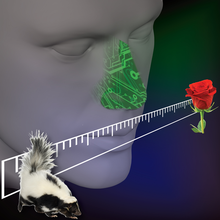A memristor is a hypothetical non-linear passive two-terminal electrical componentrelating electric charge and magnetic flux linkage. It was envisioned, and its name coined, in 1971 by circuit theorist Leon Chua.[1] According to the characterizing mathematical relations, the memristor would hypothetically operate in the following way: The memristor's electrical resistance is not constant but depends on the history of current that had previously flowed through the device, i.e., its present resistance depends on how much electric charge has flowed in what direction through it in the past; the device remembers its history — the so-called non-volatility property.[2] When the electric power supply is turned off, the memristor remembers its most recent resistance until it is turned on again.[3][4]
In 2008, a team at HP Labs claimed to have found Chua's missing memristor based on an analysis of a thin film of titanium dioxide thus connecting the operation of RRAM devices to the memristor concept; the HP result was published in Nature.[3] Following this claim, Leon Chua has argued that the memristor definition could be generalized to cover all forms of two-terminal non-volatile memory devices based on resistance switching effects.[2] There are, however, some serious doubts as to whether the memristor can actually exist in physical reality.[5][6][7]Additionally, some experimental evidence contradicts Chua's generalization since a non-passive nanobattery effect is observable in resistance switching memory.[8] Chua also argued that the memristor is the oldest known circuit element, with its effects predating the resistor, capacitor and inductor.[9]
These devices are intended for applications in nanoelectronic memories, computer logic and neuromorphic/neuromemristive computer architectures.[10] Commercial availability of memristor memory has been estimated as 2018.[11] In March 2012, a team of researchers from HRL Laboratories and the University of Michigan announced the first functioning memristor array built on a CMOSchip.[12]





